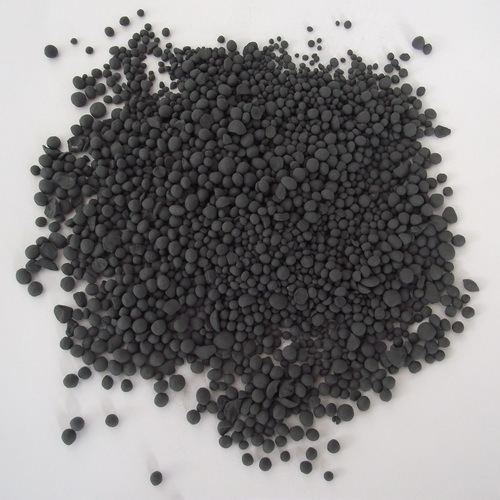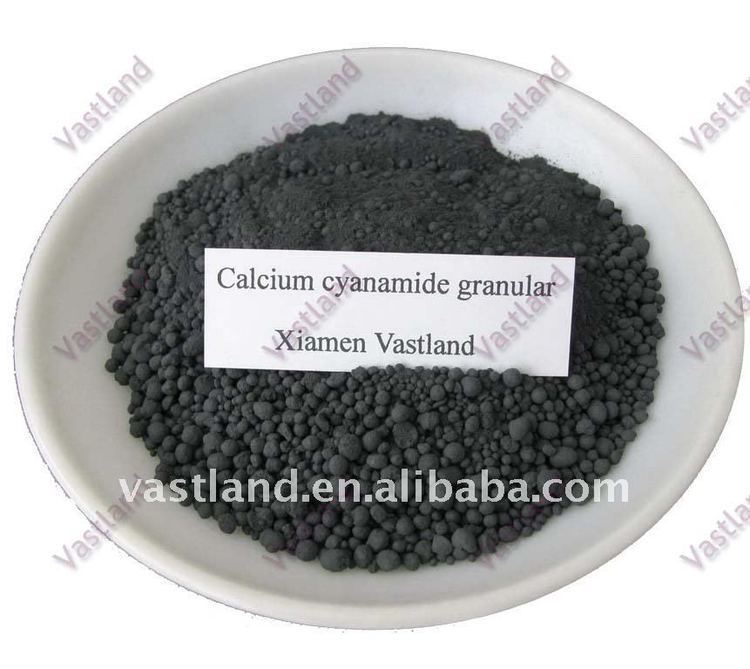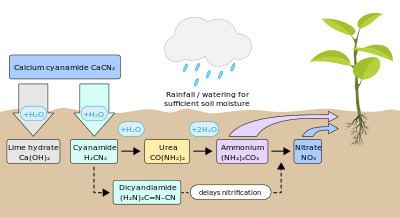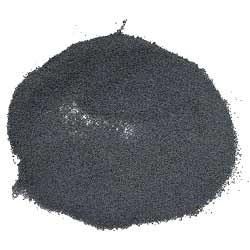Formula CaCN2 Density 2.29 g/cm³ | Molar mass 80.102 g/mol Melting point 1,340 °C | |
 | ||
Appearance White solid (Often gray or black from impurities) Related compounds | ||
Calcium cyanamide is the inorganic compound with the formula CaCN2. This calcium derivative of cyanamide (CN22−) is used as fertilizer, first synthesized in 1898 by Adolph Frank and Nikodem Caro (Frank-Caro process). It is commercially known as nitrolime.
Contents

Production

Calcium cyanamide is prepared from calcium carbide. The carbide powder is heated at about 1,000 °C in an electric furnace into which nitrogen is passed for several hours. The product is cooled to ambient temperatures and any unreacted carbide is leached out cautiously with water.
CaC2 + N2 → CaCN2 + C (ΔHƒ°= –69.0 kcal/mol at 25 °C)
The reaction is conducted in large steel chambers. An electric carbon element heats the reactants to red heat. Nitrogen gas is pressurised at 2 atmospheres.

It crystallizes in hexagonal crystal system with space group R3m and lattice constants a = 3.67, c = 14.85 (.10−1 nm).
Uses

The main use of calcium cyanamide is in agriculture as a fertilizer. In contact with water it decomposes and liberates ammonia:
CaCN2 + 3 H2O → 2 NH3 + CaCO3It was used to produce sodium cyanide by fusing with sodium carbonate:
CaCN2 + Na2CO3 + 2C → 2 NaCN + CaO + 2COSodium cyanide is used in cyanide process in gold mining. It can also be used in the preparation of calcium cyanide and melamine.
Through hydrolysis, calcium cyanamide produces cyanamide:
CaCN2 + H2O + CO2 → CaCO3 + H2NCNThe conversion is conducted on slurries, consequently most commercial cyanamide is sold as an aqueous solution.
Thiourea can be produced by the reaction of hydrogen sulfide with calcium cyanamide in the presence of carbon dioxide.
Calcium cyanamide is also used as a wire-fed alloy in steelmaking, in order to introduce nitrogen into the steel.
